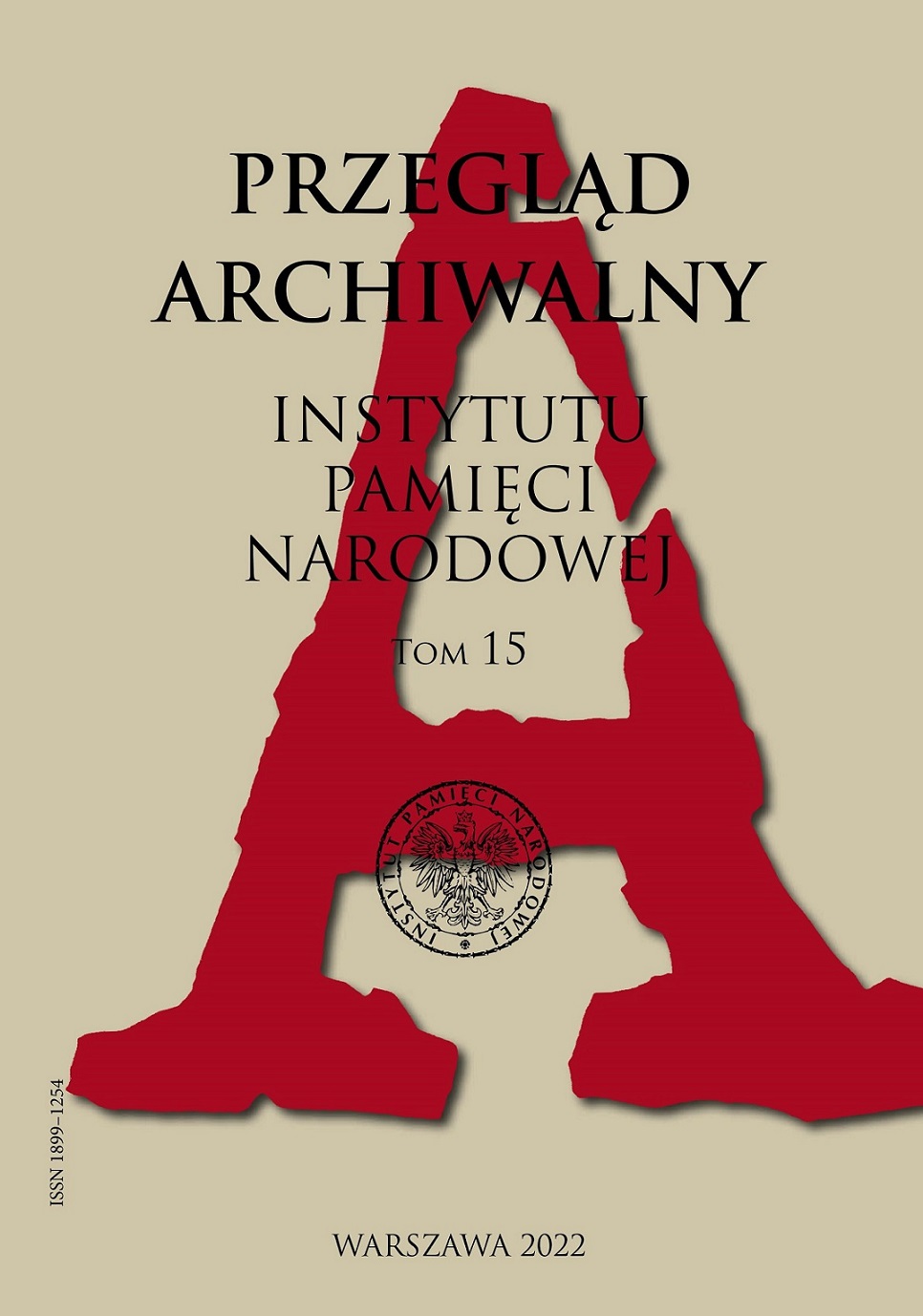No. 15 (2022)
W najnowszym, 15 tomie „Przeglądu Archiwalnego Instytutu Pamięci Narodowej” znalazło się wiele interesujących artykułów podejmujących ważne zagadnienia z dziedziny archiwistyki oraz najnowszej historii Polski i powszechnej. Redakcja rocznika od lat dokłada wszelkich starań, by na łamach naszego czasopisma publikowali wyniki swych badań archiwiści i historycy nie tylko z Instytutu, lecz także reprezentujący różne ośrodki naukowo-badawcze oraz archiwa z Polski i z zagranicy. W niniejszym tomie zamieszczone zostały teksty badaczy z Akademii Sztuki Wojennej, Akademii im. Aleksandra Gieysztora w Pułtusku, Arolsen Archives, Kijowskiego Uniwersytetu Narodowego im. Tarasa Szewczenki czy Narodowej Akademii Nauk Ukrainy. Zakres poruszanych tu tematów jest jak zawsze bardzo szeroki. Omówienie realizacji projektu Archiwum Pełne Pamięci przez Oddziałowe Archiwum IPN w Krakowie, przybliżenie historii i zasobu Archiwum w Bad Arolsen w Niemczech czy też edycja projektów dotyczących reorganizacji organów bezpieczeństwa państwa i ich nowych zadań opracowanych w okresie transformacji ustrojowej w Polsce – to tylko niektóre zagadnienia przybliżone w niniejszym woluminie.
 Język Polski
Język Polski
 English
English


 PDF (Język Polski)
PDF (Język Polski)

